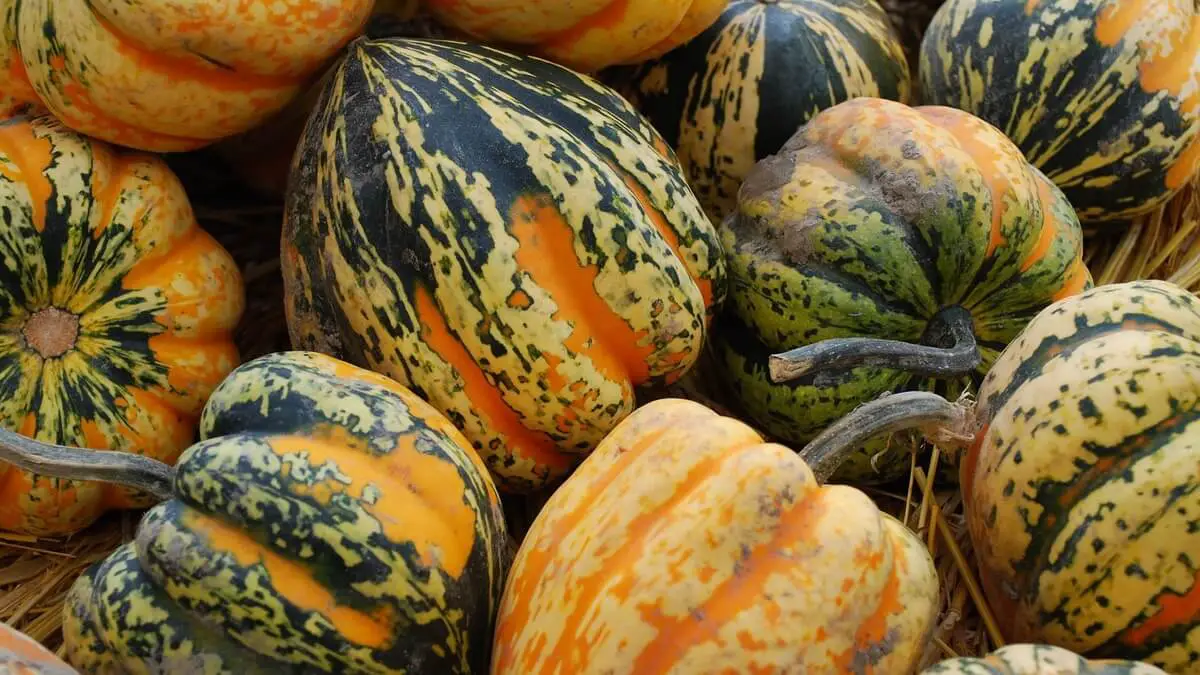Growing Acorn Squash in Gardens
Acorn squash (Cucurbita pepo var. turbinata), is also called Des Moines squash or pepper squash. It belongs to Cucurbita pepo species, which all summer squashes also belong to. Generally, growing Acorn Squash is not difficult. Just a bit of caring is enough.
This article focuses on growing Acorn Squash in gardens, harvesting, and its uses.
Normally, growing Acorn Squash in gardens requires at least a 3 – 4 months time period with full sunlight. This staple vegetable has sweet, yellowish-orange flesh inside and longitudinal ridges on the outside. You can find different colors of Acorn Squash in the market.
This crop is native to Central and North America. The Native Americans introduced this crop to Europe.
Acorn squash is one of the winter squash vegetables. This name is given to them due to their storage aspects. Generally, these vegetables can survive winters due to their thick skins. During the pre-refrigerator days, people use to store them all overwinters for consumption.
In contrast, the summer squash vegetables have thin skin and cannot survive cold weather.
Table of Contents
Propagation
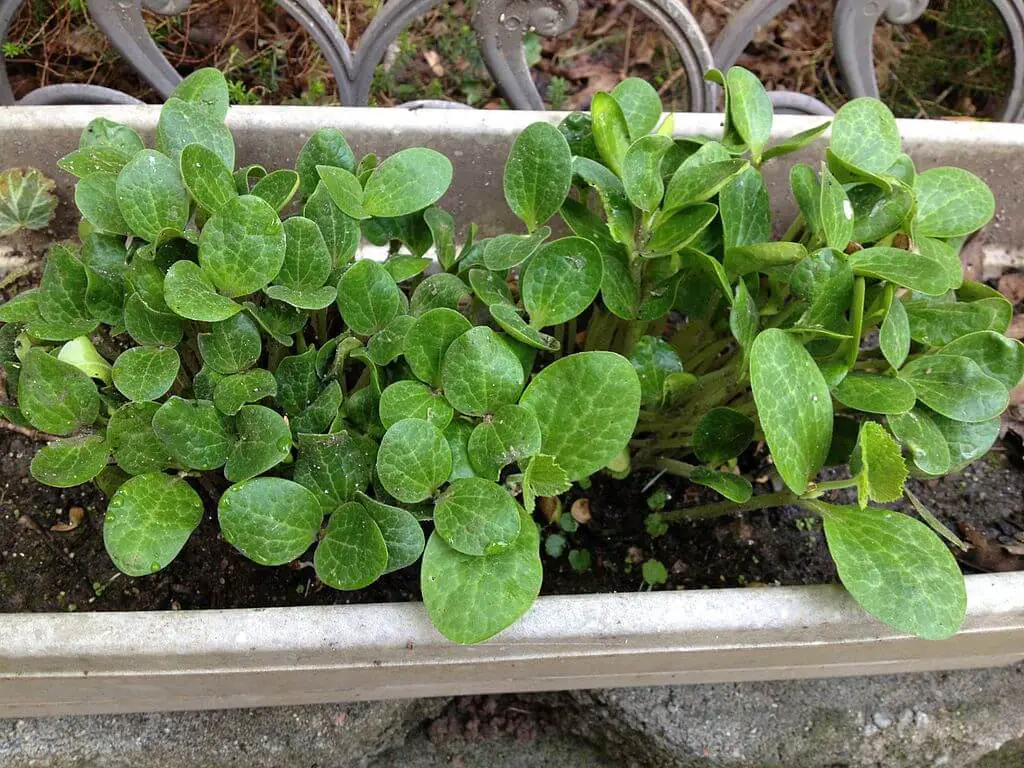
Photo by Ann Ono Mouse (Wikimedia Commons) (CC BY-SA 3.0)
Before growing acorn squash, it is advisable to consider the below-mentioned factors.
Generally, the acorn squash matures in three to four months after planting. This period may vary a little bit depending on the environmental conditions. You cannot harvest most of the winter squashes including Acorn squash before ripening. So, ensure you have an adequate growing season with the full sun before planting.
Another factor to consider is the available space. Growing acorn squash does require some real estate. You can plant 2-3 plants in 50 square feet per hill. Even if you manage to allot 1-2 hill spaces, you can harvest plenty of them.
Growing Acorn Squash in Gardens
Normally, you can purchase seeds from online stores. After planting, you can also save the remaining seeds for up to six years depending on the seed quality.
Generally, for growing acorn squash in gardens, you have to wait till the dangers of frost have passed. After that, make sure the soil temperature exceeds 15 degrees centigrade (60-degree Fahrenheit).
These plants prefer to grow in Soils with PH value between 5.8 – 6.8. So, add compost to the soil space where you have decided to plant the seeds. Make sure to loosen the soil at least 12 inches deep.
Before planting, cover the acorn squash seeds in a damp paper towel for about 2-3 hours.
Initially, plant 5-6 seeds per hill space (50 square feet) in soil mounds. This prevents root rots to a large extent while watering. This is especially useful in the case of acorn squash since they need a great deal of water. You can expect germination within a couple of weeks. After that, thin the planted seeds to three, picking out the unhealthy ones.
Normally, these plants need warmth to germinate. The vines of these plants grow well in temperatures ranging between 20 – 32 degrees centigrade (70 – 90 F).
The plants continue to grow as the temperature rises. But the flowers drop out, thereby preventing the fertilization process.
Growing Acorn Squash in Pots
You also have the choice of planting the seeds in Pots and transplanting them after germination. Purchase a large planting pot (at least 7.6 cm). Fill it with well-draining soil mixed with seed mix. Then, sprinkle warm water before sowing the seeds.
Sow 5-6 seeds at least an inch deep in the pots. Then, place the pots near a sunny window and cover them with plastic wrap. You can expect germination within a week or two.
After that, thin the seeds to three, picking out unhealthy ones. After a few days, when they show signs of growing, transplant them in your gardens.
Alternatively, you can purchase seedlings from nearby nurseries or garden centers and transplant them.
Growing Acorn Squash – Caring
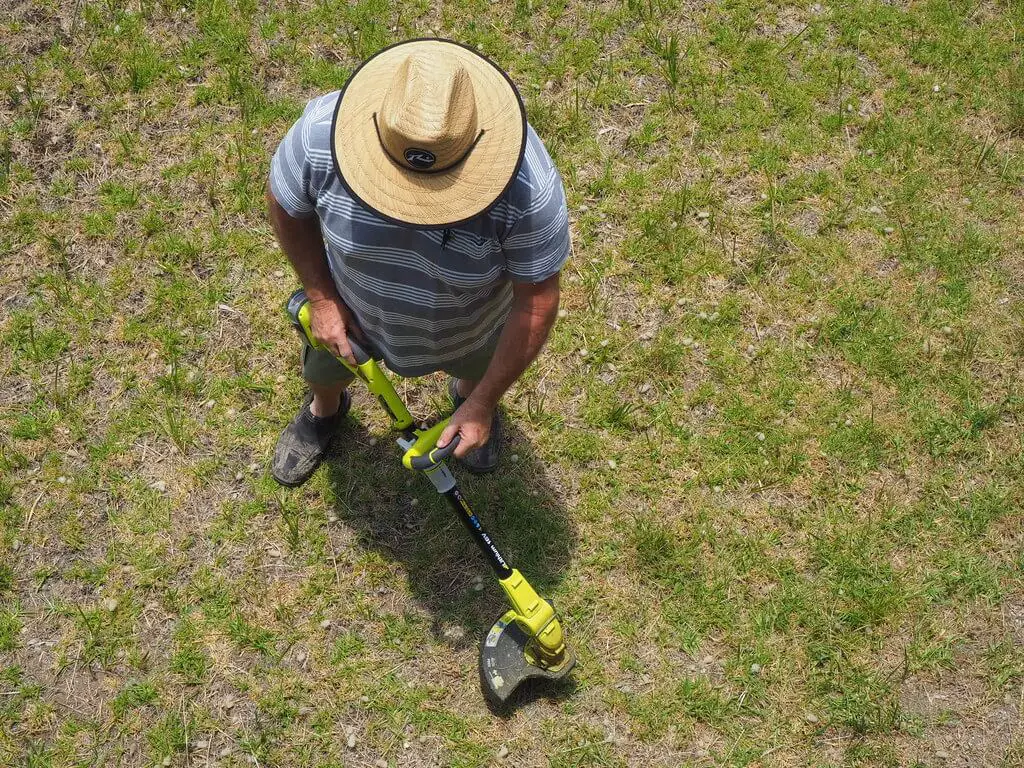
Photo by Norm Hanson (CC BY-NC-SA 2.0)
Generally, growing acorn squash needs a bit of care. The size of these plants makes them feed heavily. So, feed them at regular intervals with a good quality fertilizer.
Cover the plant surroundings with good quality mulch. After a few weeks, the plant starts developing broad leaves. if you find weeds around the plants, pull them out by hand. If you opt to use Weed Wacker, make sure not to damage the root system of plants.
While growing acorn squash, consider watering them regularly, as they require a lot of water to grow. But make sure not to overwater or underwater.
Cover young plants with a netting cheesecloth. This prevents many kinds of pests from bothering plants.
Harvesting of Acorn Squash
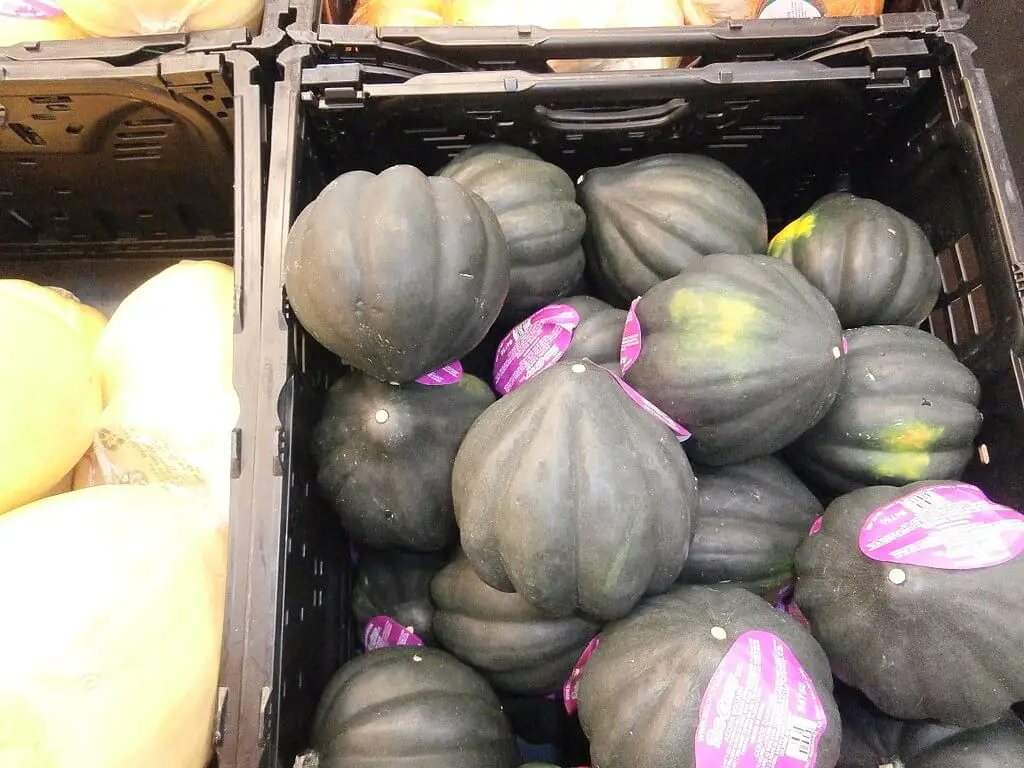
After two to three months, keep a constant watch on acorn squash plants. Usually, these plants develop dark green outer shells upon maturity. Once the outer skin grows strong enough to endure your fingernail piercing, you can start the harvest.
Harvest them individually. While doing so, make sure to leave at least one inch of the stem attached to the squash. Using good quality garden shear can ease the job and also ensure the safety of the plants.
Wash the crop and dry it. After that, store it in a dark, dry and cool space. Avoid stalking them on one another. Store them side by side. In this way, you can preserve them for several months.
Pests and Diseases
While growing acorn squash, make sure to look out for pests and disease infections occasionally. There are some common pests and diseases that occasionally infest the plants
Pests
Squash Bugs

Photo by Bernard DUPONT (Wikimedia Commons) (CC BY-SA 2.0)
These pests are usually grey, brown, or sometimes black in color. These small insects live in groups. They suck the sap out of the foliage and ruin the plant itself as a whole. They also lay eggs and multiply in foliage. You can use a good quality insecticide to treat these pests.
Cucumber Beetles
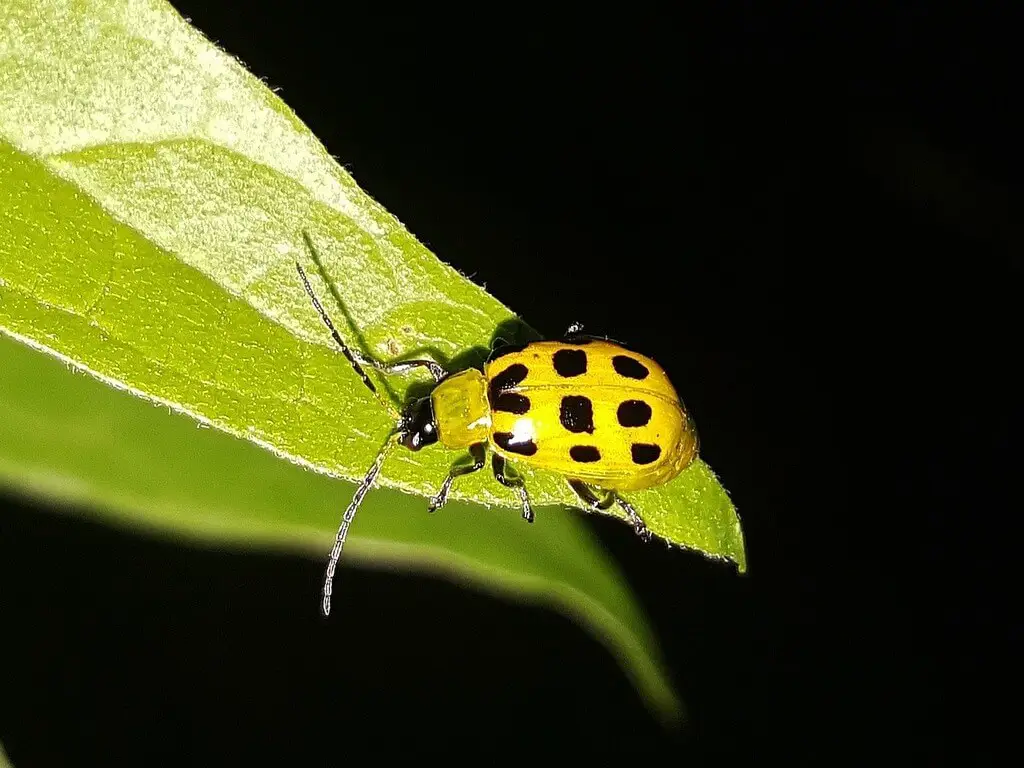
These beetles have yellow and black spots on their back. They chew on foliage especially the younger leaves. They also transmit wilt diseases from one plant to another. Good quality insecticide treatment is essential to drive these pests out.
Vine borers
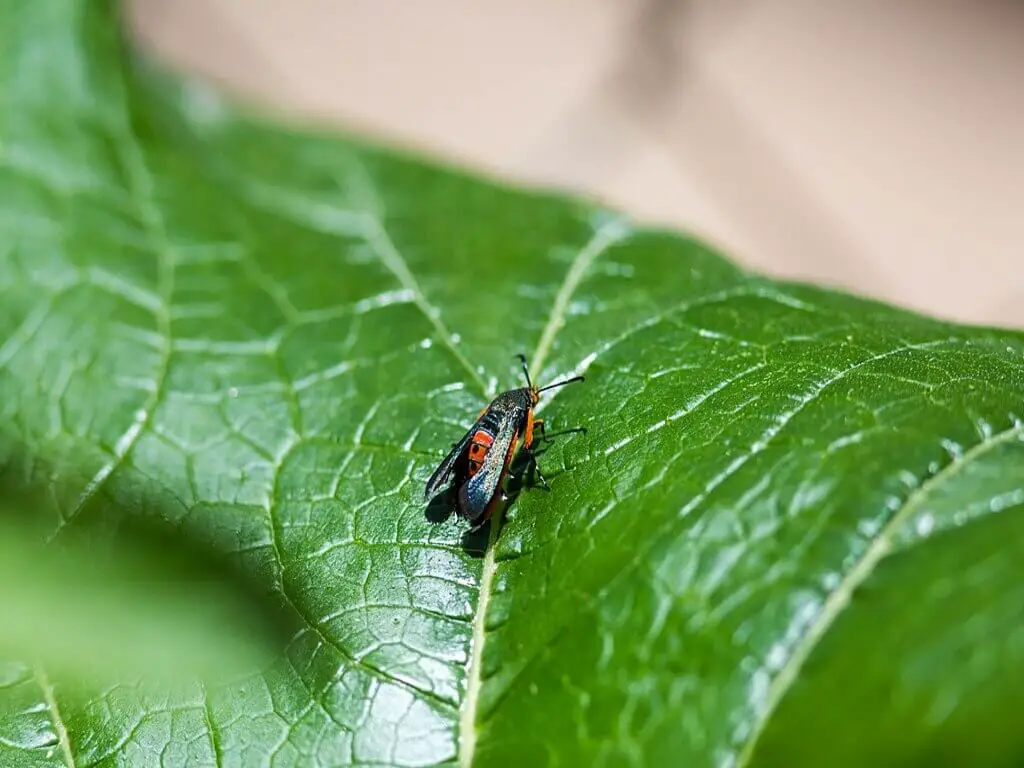
Photo by Melissa McMasters (Wikimedia Commons) (CC BY 2.0)
These are common pests that can damage your plants seriously. Vine borers attack almost any kind of squash. Generally, they bore into the stems of the plant and suck the sap out.
Once they reach inside of the stem, they continue to feed on plants from within, thereby causing irreversible damage. The infected squash plants suddenly slow their growth, shrivel, wilt, and finally die out.
Some of the gardeners mistake this scenario with water scarcity. But in reality, the plant is infested by these deadly pests. Most of the time, Vine borers leave sawdust at the plants’ base. This is how they can be marked.
You can see the best results if you use insecticide well before the Vine borer’s attack, preferably at the younger stages of the plant. Generally, you can cover the young plants with netting cheesecloth to protect them from pest infections.
In spite of all these precautions, if your plants are affected by these deadly insects, dig the whole plant out. Remove the debris immediately out of the site. Try planting fresh seeds.
Diseases

Some of the common fungal diseases in squash plants include powdery mildew, downy mildew, wilt disease, and scab disease. They leave a powdery substance on the plant foliage. They may also cause black spots on the foliage. You can use good quality soap spray to treat these fungal diseases.
Growing Acorn Squash with Companion Plants
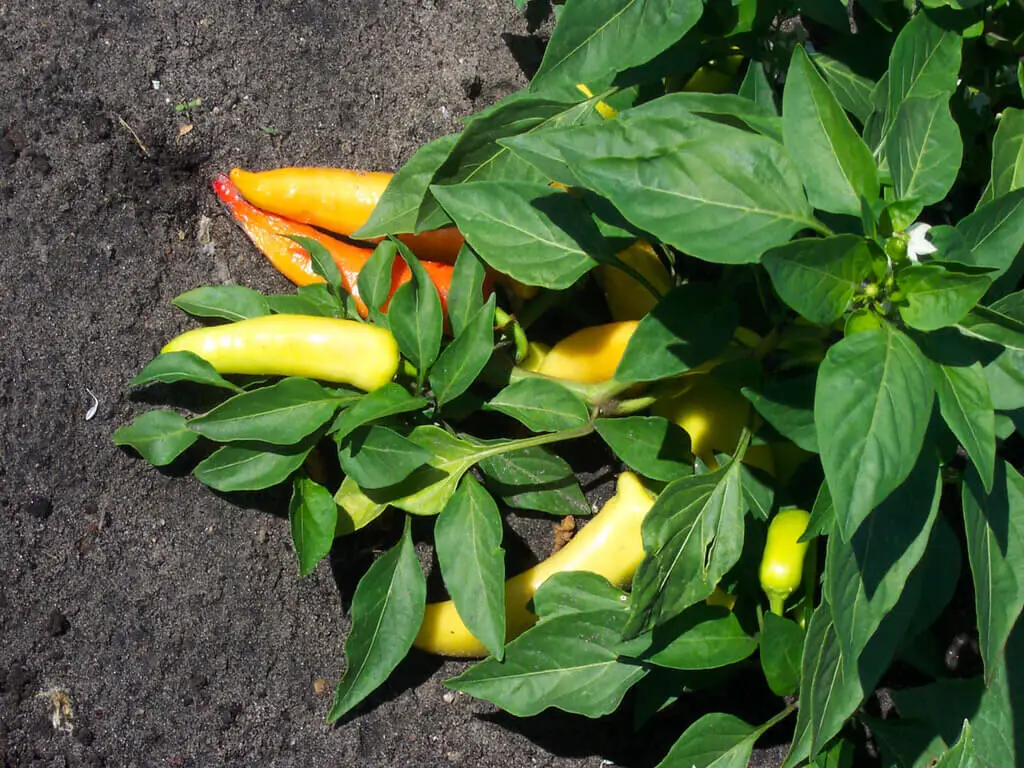
Growing acorn squash (and most of the plants in gardening) with companion plants is always advisable. Generally, these plants help each other by attracting beneficial insects, providing nutrients, supporting growth, repelling pests, and so on.
You can grow acorn squash with Banana Peppers, Bell Peppers, Onions, Beans (Pole), Okra, Oregano. Corn, Radish, Etc.,
Uses of Growing Acorn Squash
Normally, growing acorn squash in gardens has many uses. You can cook it to serve with a variety of dishes. If you grow in large numbers, you can even sell them commercially. Sometimes its market value exceeds most common vegetables.
Most people consume it baked, steamed, microwaved, or sauteed. In savory recipes, you can stuff it with meat, rice, or vegetable mixtures. In sweeter dishes, you can use it with maple syrup, glaze, or sauce to enhance the flavor.

Photo by Wald1siedel (Wikimedia Commons) (CC BY-SA 4.0)
Acorn squash is the main ingredient in famous squash soup. In fact, some people prefer to eat the toasted seeds of acorn squash separately or accompanied with the main meal.
Unlike other winter squashes, acorn squash is not rich in beta-carotene. However, it is a good source of potassium and dietary fiber. It also contains small amounts of manganese, magnesium, vitamin B, and vitamin C
Similar Posts
How to Grow Golden Zucchini in the Gardens
How to Grow Caraway Plants (Carum Carvi) in Gardens

